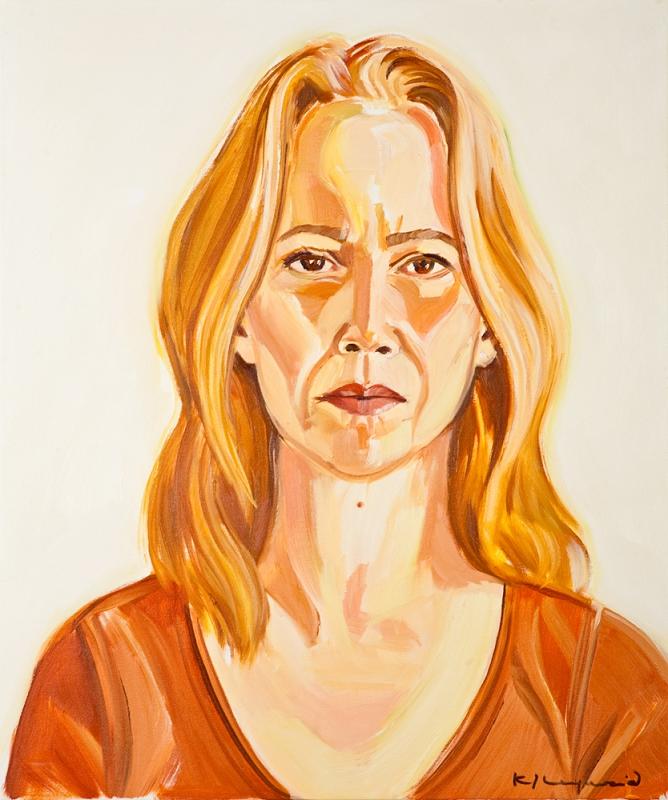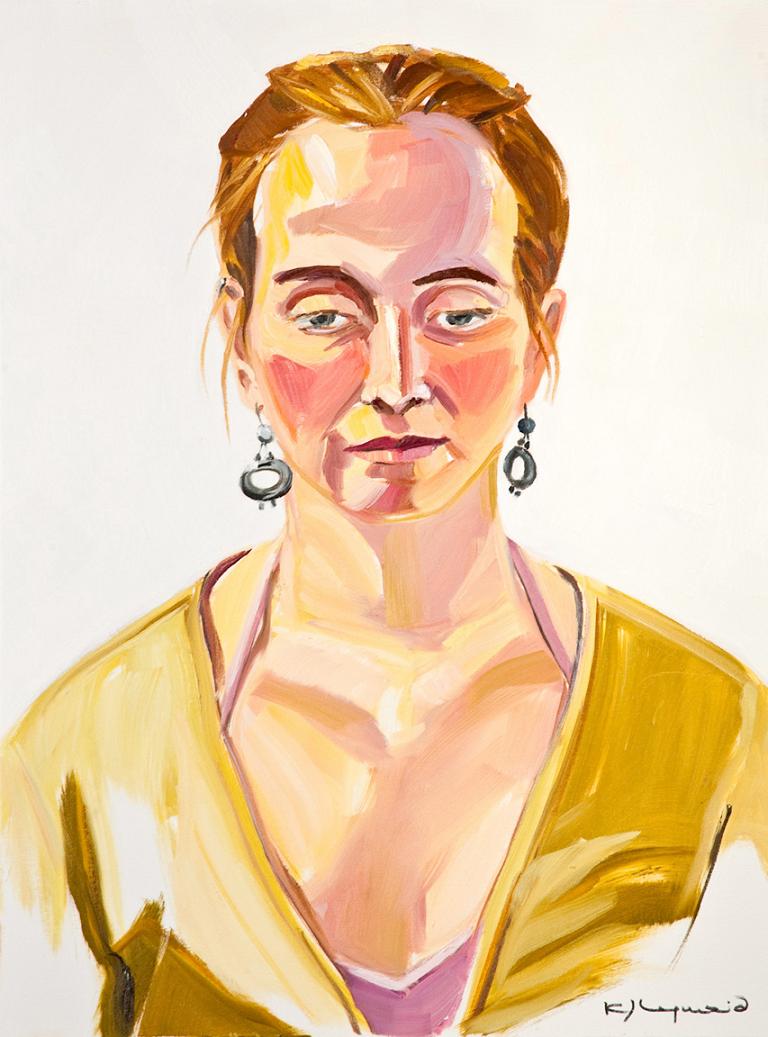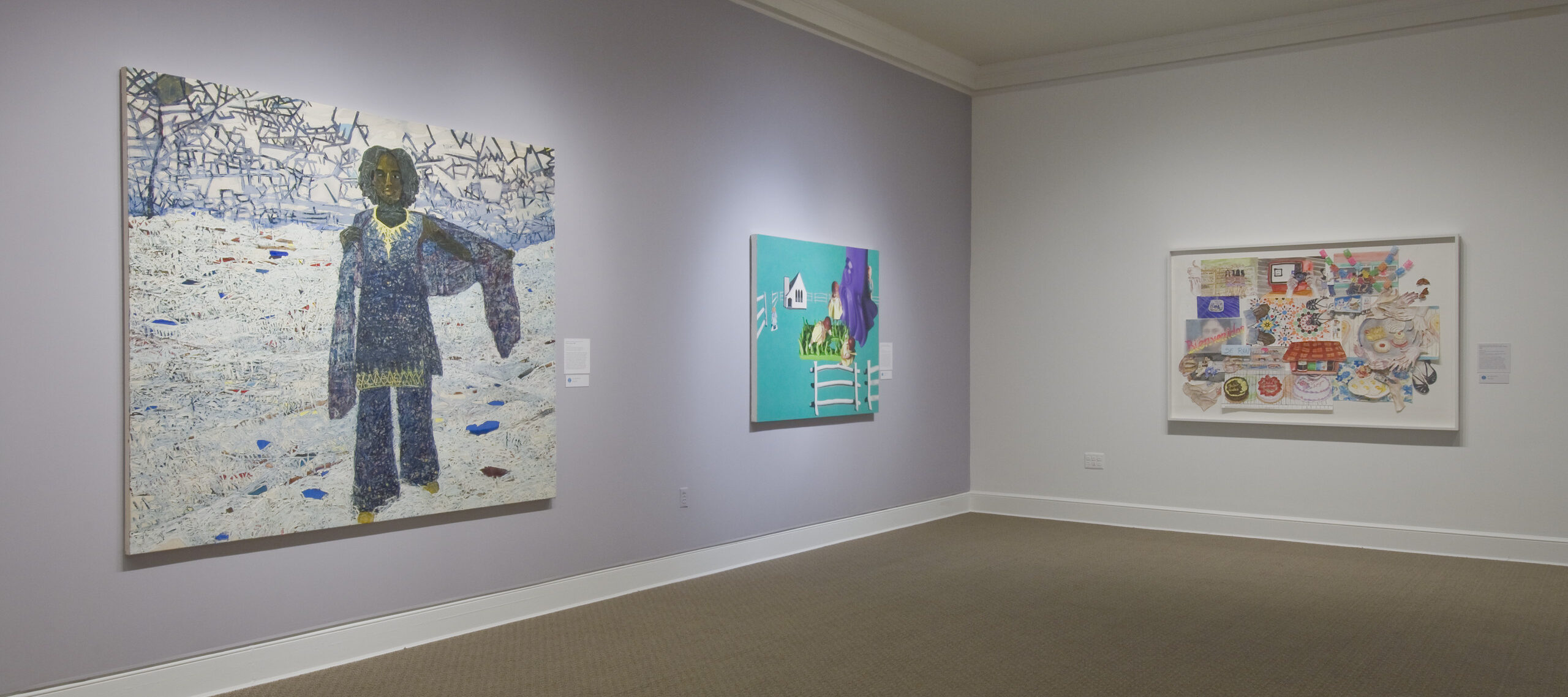
In conjunction with Body of Work: New Perspectives on Figurative Painting, Broad Strokes is proud to spotlight the artists featured in Women to Watch. Select portraitists will be commenting on their work, explaining their inspirations, processes, and influences. We are excited to kick off the series with a reflection by Kate Longmaid. Represented in the show with her oil paintings soft gaze: quiet mind and silk scarf, Longmaid works both as an artist and clinical psychologist. She explains how these two worlds interact:
“Through a contemporary approach to portraiture, I explore the rich terrain of individual identity and what is revealed in the intimate moments of seeing and being seen. I paint largely from life, seeking to capture a sense of immediacy, freshness, and emotional depth in my portraits. The paintings are done in the alla prima tradition (also known as “direct painting” or “wet on wet” oil painting), typically in 2 to 3 hour sessions. I seek to create a fresh, painterly surface reflecting the unique palette of each subject. Subjects are models, friends, and family members. From the privileged position of witnessing the other, I seek to convey the unique presence of each subject as well as our shared humanity.
In recent years I’ve explored figurative work in oils, culminating in a series of close up portraits. I’ve come to discover the intimate connections between painting and my vocation as a therapist. In this body of work, each portrait is contained within the equal dimensions of the canvas. The backgrounds are simplified, focusing attention on the subjects and linking the portraits with one another. This parallels the sameness of the therapeutic hour. In viewing the paintings, one typically moves sequentially through time and space, mirroring my experience as a therapist. At the same time, there is a sense of the whole, inviting an appreciation of the subjects’ shared humanity. This mirrors the internal experience in my work, where the microcosms of my clients’ individual lives mirror the macrocosm of humanity as a whole, the links that connect us all.

I’ve titled my self-portrait To See and Be Seen. What intrigues me are the parallels in therapy and portraiture in seeing the other and allowing oneself to be seen. In order to do my best work as a therapist, I must be willing to “see” myself, to see not only what I want to see but to confront shadow aspects of self. I approached painting my self portrait with this same intention, subjecting myself to the same close examination I’ve brought to my portraits of others.
What differentiates the self-portrait from my other portraits is the direct frontal gaze. While the other portraits allow the viewer a privileged position in observing the subject through the artist’s eyes, the self-portrait engages the viewer directly. It invites the viewer into a dialogue or interaction with the image, and thus the artist. I recognize an implied challenge in the image, suggesting ways I am seeking to confront and, in the process, come to know myself more deeply. It may also represent ways I am challenging the viewer to see what I see, both as an artist and as a therapist: to see beyond the superficial or external to the inner worlds of my subjects, and to join me in the act of bearing witness.”–Kate Longmaid, July 2010

To experience her expressive portraits for yourself, be sure to check out Body of Work! Also visit www.katelongmaid.com to see more of the artist’s captivating paintings.
